Today, my colleague Pak-Sheung and I had arranged to have lunch together. We do this from time to time and there is always intent behind it on his part. On my part also, which could broadly be described as experiencing more of Hong Kong. Pak had decided that it was time for me to try stinky tofu. Shops that sell stinky tofu can easily be recognized by their distinctive odor, that of rotting food of a proteinaceous nature. We decided that since we did not want to sit in a restaurant smelling that way, we should get stinky tofu from a take out place, and then go on somewhere else for lunch itself. This plan was agreed upon and then the day before Pak came to me suggesting I might like to change the date. As part of his attempts to become a good Buddhist, his practice was to avoid meat on the 1st and 15th day of each month and our date was for the 15th. I said that vegetarian food was fine with me and so there was no need to change.
Pak's gastronomic excursions always have settings and this one was to occur in East Mongkok, in the neighborhood of the goldfish market. When he was younger, he had gone there regularly to buy fish. There are lots and lots of small stores selling innumerable, magically colored varieties of fish, plus all the required accoutrements.
It is in a relatively run-down neighborhood and so perfect for good cheap restaurants.
Pak decided that, since it was the 15th and many people would be avoiding meat, we should go to the vegetarian restaurant first before it got too crowded. Unfortunately, when we got there, we discovered that the restaurant had changed and was now heavily centered on meat. We decided to move on to Pak's second choice, which focused on food from Yunnan Province. But that also no longer existed. This is not an uncommon occurrence in Hong Kong, where restaurants change with great rapidity. So we crossed the road to eat at a dumpling restaurant.
It turned out that it was part of a chain, a Chinese variety of fast food. They sold about five different kinds of dumplings that could be had boiled or fried. You selected one or two kinds of dumpling and combined it one of five kinds of soup. Very simple and formulaic, but very tasty also. I had hot and sour soup for the first time in Hong Kong. All of the dumplings had meat in them, but Pak had decided that he had met his religious obligations by searching out the other restaurants. He could not be blamed for the fact that they no longer existed and he was being forced to eat meat.
There were several elements of the dumpling restaurant that interested me and can be contrasted with US fast food. First, one of the employees was sitting there, busily stuffing and folding dumplings. We asked her where the wrappers came from and found they were made at their central facility. In the US, everything would be made at the central facility and delivered frozen to the outlet. Then the serving dishes, plates, bowls everything were real china or plastic, nothing disposable. It's often difficult even to get a napkin in a restaurant here, but that's another story. The chopsticks, spoons and small bowls were kept in drawers within the tables; you just open up and take out what you need.
Having finished lunch proper, it was time to search out the stinky tofu restaurant. Part of me was hoping that it would have met the same fate as the other restaurants, but soon I could tell that was not the case. The unmistakable odor became apparent amidst all the other street smells. It grew stronger and stronger until we reached the storefront. It seemed like they had a variety of things available, including sausages and animal parts, but we were single-minded. For HK$6 (less than a buck) I got a brown paper bag containing a 2 inch cube of the magic stuff on a stick. It had been deep-fried a toasty golden brown. By this time, we had started to become accustomed to the smell. Texturally, this food is good. A nice crunch to the outside, with soft and creamy inner parts. Unfortunately it tasted just like it smelled and as I started to eat it, the taste and smell combined synergistically in a rather unpleasant way. Fortunately there were several condiments available, both sweet and savory. I found that the hot sauce was pretty effective for masking the flavor, though it could not override the smell. Pak assured me that I was not required to finish the whole thing. I heartily agreed with him and jettisoned the rest of it in a handy garbage can.
I asked Pak why people ate it; did it have some perceived medicinal benefit? He said no, it was just that some people liked to live on the wild side. Stinky tofu is outside of normal behavior and consumed by people who like to be a little outrageous. I have a wide definition of food, but this was a little much for me. The soft inside part was full of gas bubbles from active fermentation. No wonder the smell was so powerful. I wondered which bacteria were responsible and hoped that they had all been killed by the frying process
We had agreed that this was to be a three-part adventure so now we went in search of Chinese dessert. As I said, Pak always has something in mind and he was looking for something in particular here. He found it, with a little directional help from some street vendors, - the Yee Shun Milk Company. I had seen these places before, though never been in. Their windows are filled with dishes of various puddings/custards. Milk-based puddings did not seem very Chinese to me, but apparently these places, which originated in Macau, have been around a long time. But they definitely represent a fusion between East and West. The menu also included fried eggs and sausage and sandwiches. But we were after desert. We both got steamed milk; Pak's was flavored with ginger. I thought of it as something you might be fed in a British convalescent home. Very nutritious with all those milk and egg proteins but easy to get down. It was softly set, nicely flavored and not too sweet; the perfect antidote to stinky tofu.
Wednesday, April 14, 2010
Subscribe to:
Post Comments (Atom)










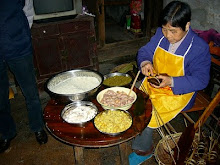









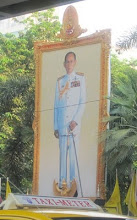




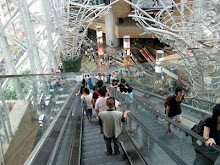








































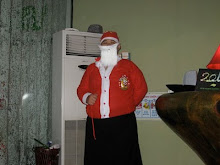




































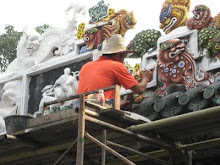




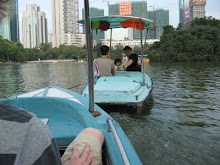






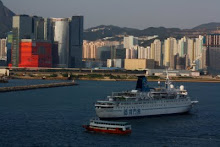

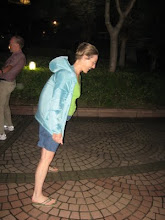







No comments:
Post a Comment